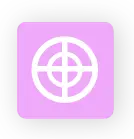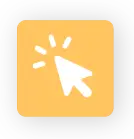Technology integration is revolutionizing patient care in today’s rapidly evolving healthcare landscape. One such innovation is Remote Patient Monitoring (RPM), a powerful tool that enables healthcare providers to monitor and manage patients’ health remotely.
This blog aims to provide healthcare providers with thorough insights into remote patient monitoring best practices for implementing an effective RPM program in their practice. We will delve into the definition of RPM, explore its benefits for providers and patients, discuss remote patient monitoring best practices, highlight potential risks, and suggest the advantages of outsourcing RPM while also sharing insights into maximizing the potential of remote patient monitoring.
What is Remote Patient Monitoring?
Remote Patient Monitoring (RPM) involves the use of digital technologies to collect patient data, such as vital signs, symptoms, and other health metrics, from individuals in a non-clinical setting. This data is then transmitted securely to healthcare providers, allowing them to monitor patients’ conditions and provide timely interventions when necessary. RPM offers a proactive approach to healthcare, enabling earlier detection of potential issues and optimizing patient outcomes.
What is the Difference Between Remote Patient Monitoring and Chronic Care Management?
While Remote Patient Monitoring (RPM) and Chronic Care Management (CCM) are often used interchangeably, it is important to understand their distinctions. RPM focuses on the continuous collection of patient data, using devices like wearables or mobile apps, to monitor health parameters remotely.
On the other hand, CCM involves care coordination and management services provided by healthcare providers to patients with chronic conditions. RPM can be a crucial component of a comprehensive CCM program, facilitating regular monitoring and enhancing patient engagement.
Benefits of Implementing Remote Patient Monitoring
Implementing an RPM program offers numerous advantages to both healthcare providers and patients. That is, if remote patient monitoring best practices are adhered to.
Benefits to Healthcare Providers
1. Enhanced Care Coordination: RPM enables real-time data sharing, empowering providers to monitor patients remotely and intervene promptly, improving care coordination.
2. Increased Efficiency: By remotely monitoring patients, providers can reduce the need for in-person visits, optimize resource utilization, and allocate their time and attention more efficiently.
3. Improved Patient Outcomes: RPM facilitates proactive management of chronic conditions, reducing hospital readmissions, minimizing complications, and ultimately improving patient outcomes.
4. Better Patient Engagement: Engaging patients in their care through RPM fosters a sense of empowerment and accountability, leading to increased adherence to treatment plans and lifestyle modifications.
Remote Patient Monitoring (RPM) Best Practices

Implementing telehealth and RPM in your practice requires following best practices that ensure successful program implementation and optimal patient outcomes. These best practices provide a framework for seamless implementation, improved care coordination, enhanced patient engagement, and better healthcare delivery.
1. Define Goals and Objectives
Establish the goals and objectives of your RPM program. Are you aiming to reduce hospital readmissions, improve medication adherence, or enhance chronic disease management? Align these objectives with your practice’s overall mission and strategy. Having well-defined goals will guide your program’s implementation and evaluation.
2. Select Appropriate Technology
Choosing the right RPM technology is crucial for the success of your program. Consider factors like ease of use, patient engagement features, data security, interoperability with existing systems (such as electronic health records), and scalability. Consult with technology vendors and conduct thorough research to find a solution that aligns with your patient’s needs and capabilities.
3. Engage and Educate Patients
Patient engagement is critical to the success of an RPM program. Educate your patients about the benefits of RPM and provide comprehensive instructions on using monitoring devices or mobile applications. Emphasize the importance of regular data reporting and its role in improving health outcomes. Encourage active patient participation and address any concerns or questions they may have.
4. Establish Standard Operating Procedures (SOPs)
Develop standardized protocols for various aspects of your RPM program. This includes patient enrollment, device setup, data collection, data transmission, and provider response. Clearly define roles and responsibilities for staff members involved in the RPM program to ensure efficient workflows and minimize confusion. SOPs provide a consistent framework for delivering high-quality care and ensure that all staff members are on the same page.
5. Ensure Data Security and Privacy
Patient data security and privacy are paramount in an RPM program. Implement robust security measures to protect patient information, adhering to the Health Insurance Portability and Accountability Act (HIPAA) regulations and other relevant privacy guidelines. Consider encryption techniques, secure data transmission protocols, and secure storage solutions. Regularly assess your data security practices and update them as needed to stay ahead of potential threats.
6. Train and Support Staff
Proper training for healthcare providers and support staff is essential for successfully implementing an RPM program. Train your staff on using RPM technology, interpreting patient data, and effectively communicating with patients remotely. Ensure that they understand the program’s goals and objectives, as well as their roles and responsibilities. Ongoing training and support should be provided to keep them updated on the latest RPM advancements and address any challenges they may encounter.
7. Monitor and Evaluate Program Outcomes
Continuously monitor and evaluate the outcomes of your RPM program. Collect and analyze data on key performance indicators, such as patient adherence, health outcomes, cost savings, and patient satisfaction. Assess the effectiveness of your program in achieving the defined goals and objectives. Use these insights to identify areas for improvement and make necessary adjustments to optimize your RPM program’s impact.
By following these remote patient monitoring best practices, you can maximize the benefits of implementing an RPM program and ensure that it aligns with healthcare providers’ and patients’ needs and expectations.
Risks for Healthcare Providers when Implementing a Remote Patient Monitoring (RPM) Program
While RPM offers numerous benefits, it’s essential to consider potential risks. We highly recommend reading our blog about the risks of implementing remote patient monitoring at your healthcare organization. Below is a summary of some of the most essential risks of implementing remote patient monitoring.
Technical Challenges
Implementation hurdles and technical issues may arise when integrating RPM systems with existing workflows and electronic health record (EHR) systems.
Data Security Risks
Remote monitoring involves transmitting and storing sensitive patient data, requiring robust security measures to safeguard against data breaches and maintain patient privacy.
Regulatory Compliance
Providers must ensure adherence to regulatory frameworks, such as HIPAA, to protect patient privacy and maintain compliance with healthcare industry standards.
Why Healthcare Providers Should Consider Outsourcing RPM
Outsourcing RPM services to specialized providers, like Neolytix, can offer several advantages. It allows healthcare providers to leverage the expertise of experienced professionals who are well-versed in implementing and managing RPM programs. Outsourcing also:
- Reduces the burden on internal resources,
- Accelerates program deployment
- Ensures compliance with regulations
- Maximize patient outcomes
- Ensures remote patient monitoring best practices
Setting Up an RPM Program
Implementing a successful RPM program requires meticulous planning, the right technology, and strategic patient engagement. This guide will walk you through the essential steps to establish a robust RPM program that can enhance patient care, improve health outcomes, and streamline clinical workflows.
Assessment and Planning
Conducting a Needs Assessment:
To set up a successful remote patient monitoring (RPM) program, begin with a comprehensive needs assessment. Identify patient populations that will benefit most from RPM. Focus on those with chronic conditions, high readmission rates, or those requiring continuous monitoring.
Defining Clear Goals and Objectives:
Establish clear, measurable goals for your RPM program. Whether it’s to reduce hospital readmissions with remote patient monitoring, improve medication adherence, or enhance chronic care management, having specific objectives will guide the program’s implementation and evaluation.
Technology Selection
Choosing the Right RPM Devices and Platforms:
Select the best remote patient monitoring devices and platforms based on patient needs and program goals. Ensure the chosen technology is user-friendly, secure, and compatible with existing Electronic Health Records (EHR) systems to optimize the remote patient monitoring workflow.
Ensuring Compatibility with Existing EHR Systems:
Integration with current EHR systems is crucial for a seamless RPM implementation. Ensure the best RPM software is chosen for compatibility, data security, and ease of use.
Patient Selection
Criteria for Selecting Patients Suitable for RPM:
Develop criteria for identifying patients who qualify for chronic care management remote patient monitoring. Focus on those with chronic conditions, frequent hospitalizations, or those needing regular health monitoring.
Engaging Patients and Obtaining Informed Consent:
Engage patients by explaining the benefits of RPM and obtaining their informed consent. Clear communication about how RPM and CCM billing works can also help in patient engagement.
By following these structured steps, healthcare providers can effectively set up remote patient monitoring guidelines that not only meets the needs of patients but also aligns with the broader goals of the healthcare organization. Implementing these best practices will ensure a smooth RPM implementation, ultimately leading to enhanced patient care and operational efficiency.
Best Practices for Implementing RPM
Taking into account the challenges of remote patient monitoring, implementing a successful RPM program involves several best practices that ensure optimal outcomes for both healthcare providers and patients. By following these guidelines, providers can maximize the benefits of RPM, enhance patient engagement, and improve overall healthcare delivery.
Comprehensive Onboarding
Educating Patients on the Use of RPM Devices and Platforms:
A successful RPM program begins with thorough patient education. Ensure that patients understand how to use remote patient monitoring devices and platforms. This education should cover device operation, data reporting, and the importance of regular monitoring.
Providing Technical Support and Resources:
Offer robust technical support and resources to patients and caregivers. Providing access to patient privacy monitoring software and troubleshooting assistance can help address any technical challenges that arise during the RPM enrollment process.
Continuous Monitoring and Data Management
Establishing Protocols for Continuous Data Collection and Monitoring:
Set up clear protocols for continuous remote patient monitoring data collection. This includes regular check-ins and data uploads to track patient health metrics effectively.
Using Data Analytics to Identify Trends and Intervene Early:
Leverage data analytics to identify health trends and intervene early. By analyzing remote patient monitoring data, providers can detect potential issues before they escalate, optimizing patient outcomes.
Integration with Care Plans
Integrate RPM data into personalized care plans to tailor treatments based on real-time health information. This approach ensures that care plans are dynamic and responsive to patient needs.
Coordinating with Healthcare Providers to Ensure Seamless Integration:
Ensure seamless integration of RPM data with existing healthcare workflows. Coordinate with healthcare providers to incorporate RPM insights into regular patient care, enhancing the overall RPM in healthcare experience.
Patient Engagement and Communication
Regularly Communicating with Patients to Encourage Adherence and Address Concerns:
Maintaining regular communication with patients is crucial for encouraging adherence to remote patient monitoring (RPM) protocols and addressing any concerns. Utilizing patient portals and mobile apps can facilitate easy access to health information, supporting patient engagement. These platforms are part of the best patient monitoring systems that help in optimizing RPM program healthcare.
Utilizing Patient Portals and Mobile Apps for Easy Access to Health Information:
Patient portals and mobile apps are essential tools for engaging patients in their care. These platforms allow patients to access their health data, communicate with providers, and stay informed about their treatment plans. Such tools are integral to remote patient monitoring programming and ensure that patients are active participants in their health management.
Training and Support for Healthcare Staff
Offer comprehensive training for healthcare providers on using RPM technologies. This training should cover device usage, data interpretation, and effective communication with patients. Understanding the difference between CCM and RPM, and the integration of RPM and CCM services, can further enhance the RPM/CCM experience.
Establishing a Support System for Troubleshooting and Addressing Issues:
Create a support system to troubleshoot and address any issues that healthcare staff may encounter. This system ensures that the RPM program runs smoothly and efficiently, leveraging the best remote patient monitoring solutions for seamless operation.
Evaluating and Improving RPM Programs
Measuring Outcomes:
Define key performance indicators (KPIs) to measure the success of the RPM program. Regularly collect and analyze data to assess patient outcomes and the overall effectiveness of the program. This approach helps in understanding the potential of remote patient monitoring and optimizing health outcomes.
Collecting and Analyzing Data to Assess Patient Outcomes and Program Effectiveness:
Data analysis is crucial for evaluating the success of the RPM program. By assessing remote patient monitoring outcomes and identifying areas for improvement, providers can continuously refine their RPM strategies.
Patient and Provider Feedback:
Gather feedback from patients and healthcare providers to identify areas for improvement. Adjust the RPM program based on this feedback and data analysis to ensure it meets the needs of all stakeholders. This feedback loop is vital for overcoming remote patient monitoring challenges.
Making Adjustments to the RPM Program Based on Feedback and Data Analysis:
Continuous improvement is key to a successful RPM program. Regularly review and update RPM protocols and practices to stay aligned with evolving healthcare needs and technological advancements. This process ensures the program remains one of the best remote patient monitoring programs available.
By following these best practices for remote patient monitoring implementation, healthcare providers can enhance patient care, improve health outcomes, and streamline clinical workflows. Leveraging RPM outsourcing to experienced providers like Neolytix can further streamline the process and ensure compliance with industry standards.
Maximizing the Potential of Remote Patient Monitoring
Remote Patient Monitoring (RPM) is transforming healthcare by providing continuous patient care outside traditional settings. To fully leverage RPM, it’s essential to optimize RPM and integrate it effectively into your practice. Here’s how:
Understanding How Does Remote Patient Monitoring Work
To optimize health remote patient monitoring, it’s important to take into account that RPM uses digital devices to collect patient data, which is then transmitted to healthcare providers for continuous monitoring and timely interventions.
The Intersection of RPM and CCM
What does medical RPM CCM stand for? It stands for Remote Patient Monitoring and Chronic Care Management. Combining chronic care management and remote patient monitoring enhances patient care by integrating continuous data collection with comprehensive care coordination.
Enrolling Patients in Remote Patient Monitoring
A critical step is enrolling patients in remote patient monitoring. Identify and educate patients who would benefit most, such as those with chronic conditions. Effective onboarding ensures patient compliance and successful data collection.
Choosing the Best Remote Patient Monitoring Software
It’s important to look for an alternative that is user-friendly, secure, and integrates with your existing systems. This facilitates accurate data collection and analysis, helping healthcare providers make informed decisions and optimize health remote patient monitoring.
Benefits for RPM Providers and Patients
Both RPM providers and patients benefit significantly from a well-optimized RPM program. Providers enjoy enhanced care coordination and reduced hospital readmissions, while patients benefit from improved health outcomes and greater involvement in their care.
By understanding how remote patient monitoring works and effectively enrolling patients in remote patient monitoring, healthcare providers can maximize the potential of their RPM programs while achieving the best outcomes in chronic care management and remote patient monitoring.
Remote Patient Monitoring (RPM) Best Practices - Conclusion and Analysis
By outsourcing Remote Patient Monitoring Programs, healthcare providers can enhance care coordination, improve patient outcomes, and empower individuals to participate actively in their treatment. Outsourced clinical monitoring allows providers to leverage the expertise of the best remote patient monitoring companies, ensuring that the program is implemented efficiently and effectively.
However, following remote patient monitoring best practices, addressing potential risks, and considering outsourcing options are crucial for successful remote patient monitoring implementation. Understanding the patient monitoring definition and knowing who qualifies for remote patient monitoring are essential steps in the implementation process. These steps ensure that the right patient populations benefit from remote patient monitoring chronic care management.
Are you ready to revolutionize your practice by delivering improved care through Remote Patient Monitoring and boosting your revenue simultaneously?
Contact Neolytix today and schedule a free, no-obligation consultation to learn more about the benefits and remote patient monitoring best practices for implementing remote patient monitoring (RPM) or chronic care management (CCM) at your practice.
Utilize our expertise as part of your remote patient monitoring implementation guide to optimize health RPM and achieve the best outcomes for your patients.
Schedule a free consultation to learn more
Complete the form, and someone from our team will contact you!



